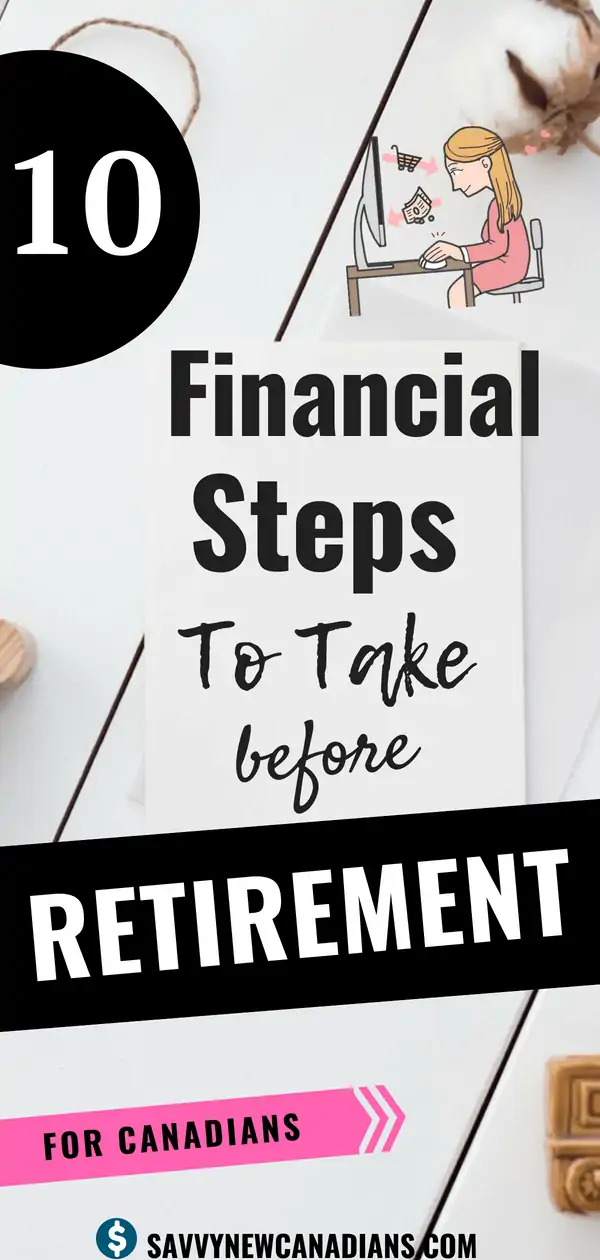Planning and organizing your retirement is one of the most rewarding tasks you can do for yourself.
Starting early and not waiting until your last day on the job, ensuring you have the required funds available or planned for, and easing into a retirement light on worry and apprehension is possible – but it requires some effort on your part.
Retirement can be daunting in general. However, if you take care of these ten important financial tasks (pre-retirement checklist and strategies) and put them in order, your retirement can become the best time of your life.
1. Picture Your Retirement
As they say, “a picture is worth a thousand words.” While your retirement picture may only exist in your mind at this point, it is your first step in planning for retirement.
A clear picture of what retirement should look like is the incentive… the drive that keeps you going to ensure that the things you need are in place before you retire.
Find answers to the following questions:
- When do you want to retire? In one, two, five, ten years?
- How do you want to retire? Start with part-time work? Stop all work?
- Where do you want to retire? At home? Abroad? A mix of both?
- What are your retirement goals? Travel the world? Start a pet project? Retire early? Retire later? Golf all day, every day?
2. Prepare a Retirement Budget
This starts with answering the question: “How much money will I need in retirement?”
There are many rules of thumb. From a retirement pot that meets a 4% withdrawal rate to 70% of your annual pre-retirement income or a total of your annual income multiplied by multiples of 10 to 14.
The amount of income you will need to sustain yourself in retirement will depend on your specific circumstances, needs, and wants.
A budget requires that you carefully detail your expected monthly income and expenses. Consider that some expenses (such as childcare, mortgage payments, and work-related spending) may no longer be applicable. There will also be some new expenses, such as those related to travel, health, and leisure.
Does your expected income match your corresponding expenses? Can you realistically fund the lifestyle you have imagined in retirement? Do the numbers add up? Your budgeting exercise may reveal that:
- You are on track. Bravo!
- You need to make some adjustments and cut expenses or downsize.
- You need to start saving more towards your retirement in an RRSP, TFSA, or non-registered investment account.
- You need to work a bit longer.
Check out this Canadian Retirement Income Calculator.
3. Eliminate Debt
Plan to retire with zero (or very little) debt. Start with paying off high-interest debt (credit cards) and move on down the line until you destroy all your debts, including mortgage debt.
Becoming debt-free means you have one less thing to worry about in retirement. If you are over your head in debt, consider consolidating your debts well before retirement comes knocking.
4. Review Your Investment Portfolio
Review the assets in your investment accounts – RRSP, TFSA, and others. Your risk tolerance at age 30 will differ from your risk tolerance at age 65.
As you grow older, you no longer have the investment time horizon you had as a younger person to recover from market downturns, and your portfolio’s asset allocation should reflect this.
- Is your portfolio adequately diversified?
- In retirement, you want a combination of growth and safety, and depending on your expected sources of income, a conservative to a balanced portfolio may help you sleep better at night.
Do you have unused contribution room in your registered plans?
- Consider using up your RRSP contribution room to get the tax refund. Maximize your tax savings by investing the refund you receive as well.
- TFSA income is non-taxable and should be maxed out before other accounts.
How do you plan to generate income from your RRSP in retirement?
- You can cash out your funds, convert the RRSP into an RRIF, or purchase an annuity.
- An RRIF will require you to withdraw a mandatory minimum amount yearly – there is no maximum threshold.
- A life annuity will guarantee you a certain amount of periodic income for life.
5. Think About Government Benefits
Income from government benefits makes up a significant portion of the total income for most seniors. It is important you plan how best to utilize these benefits.
Old Age Security (OAS): You can start receiving an OAS pension from age 65. You can choose to defer OAS for up to 5 years to increase (by up to 36%) how much you are eligible for later.
If your income exceeds a threshold amount, part or all of your OAS payment may be clawed back. Low-income seniors may qualify for Guaranteed Income Supplement (GIS) in addition to OAS.
Canada Pension Plan (CPP): You can expect to get CPP benefits if you contributed to the plan and may be eligible as early as age 60. If you opt for payments early (before 65 years), you get a reduced monthly benefit. If you delay (after age 65), your monthly benefits increase.
To ensure that you get your government benefits on time, it is important you apply early. You can apply up to 12 months before when you want to start receiving your pension.

Related: The Complete Guide To Retirement Income in Canada
6. Think Workplace Pensions
Depending on your age when you retire and whether you have reached the prescribed or minimum pension age in your province, there are various options for your workplace pensions:
- You may receive the commuted value in cash.
- The funds may be transferred to a LIRA or LRSP before retirement and then converted into a LIF, LRIF, RLIF, PRIF, or life annuity in retirement.
- You can receive a regular pension income from the plan.
7. Think About Taxes
Consider how you can lower your taxable income in retirement. The lower the taxes you have to pay, the more money you can spend on having fun!
Think about:
- Income Splitting: You can split income from an RRIF, LIF or Annuity with a spouse in a way that lowers your total family tax liability.
- Pension Sharing: A higher-tax bracket spouse can save on taxes by sharing CPP with a lower-tax bracket spouse. You are required to apply to Service Canada for approval to share your CPP with a spouse or common-law partner by completing Form ISP1002.
- TFSA: Max out your TFSA room first if you are making further investments since TFSA income is not considered taxable income and will not affect your eligibility for other income-tested benefits, e.g. GIS.
- Keep income-producing assets in a registered plan (TFSA) to avoid paying taxes on income earned at your marginal tax rate.
- Find out what the tax implications are if you plan to live abroad.
- Remember to apply for the Pension Income Tax Credit if you have eligible pension income (RRIF, LIF, Annuity).
8. Think About Housing
Where do you plan to live?
- Do you plan to continue living in your current residence in retirement?
- Are you downsizing and buying a smaller home or renting?
- Are you planning to live abroad in a sunnier, cheaper climate?
- Is your home going to provide a significant portion of your retirement income?
- Do you plan to get a reverse mortgage?
- What are the costs of a retirement home or in-home assistance?
9. Examine Your Insurance
Review your insurance to ensure you are adequately covered. Old age comes with its own peculiar needs, and you should consider if you need:
- Life Insurance (Use PolicyMe or PolicyAdvisor to find the lowest life insurance quotes available)
- Critical illness insurance
- Long-term care insurance
- Private travel medical insurance
Although we have near-universal healthcare in Canada, it may not cover all your needs. If you are travelling abroad, you may need health insurance that covers you outside of Canada.
10. Develop an Estate Plan
Have you made a will? Does it need updating? Prepare a will that clearly states how you want your estate to be dispersed after you die. This will save your family a lot of stress and ensure your wishes are respected.
If you do not have a will, the government will appoint an administrator to distribute your estate based on provincial legislation. Regularly review your will to see if it needs updating.
Consider getting a power of attorney, which gives a person you trust the power to manage your finances and make decisions on your behalf when you are incapable of doing so yourself.
You can now create a legal will online in Canada using LegalWills for less than $50. It takes less than 20 minutes and covers everything you need for your last will and testament, power of attorney, and healthcare emergency wishes.
Create your will online and enter the promo code SAVVY20 to get 20% off.
You can also compare life insurance rates in Canada.
Closing Thoughts
You should start tackling your retirement planning early so that when it comes, you are ready. Depending on your circumstances, it may be beneficial to consult with a professional financial planner.
In addition to these essential financial steps, you should also start thinking about what you are going to be doing to stay active and healthy and to live your life to its fullest!
Related Posts:
- How To Generate Income From Your RRSP in Retirement
- Group RRSP: Don’t Leave Money on the Table
- The Behavioural Biases Killing Your Investing
- Guaranteed Income Supplement (GIS) Explained
- Everything You Need to Know About the CPP
- A Complete Guide to Robo-Advisors in Canada





Great list!I hope people listen.
Steve